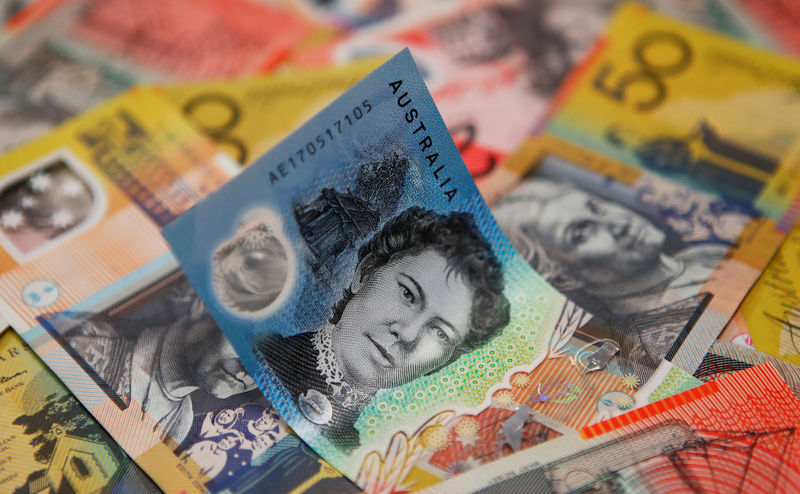Investing.com – Investors should consider buying the Australian dollar as the currency experiences three crucial tailwinds, according to HSBC.
The first and perhaps most important factor likely to support the dollar is policy support from China, HSBC analysts said in an Oct. 9 note.
Chinese optimism helped lift the AUD in late September through the financial markets channel (i.e. risk appetite, Australian trading conditions and interest rate prospects to a lesser extent), according to HSBC, but AUD/USD performance lagged by a wide margin. optimism. .
Markets appear to be casting doubt on whether the positive sentiment can be accompanied by real economic benefits, especially higher demand for steel.
That said, the recent stimulus announcements have been significant, and we believe what matters most for the AUD is not the immediate size or effectiveness of the policy measures, but the “policy commitment” coordinated by fiscal and monetary authorities, the bank added to.
“In an environment where bad news could yield stronger policy support, we prefer the AUD to recover from China-related sell-off unless the “policy put” fades,” HSBC said.
“The ultimate extent of the Australian dollar’s rise will depend on whether policy measures can revive the Chinese economy.”
Second, there is increasing easing among major central banks, which should likely make global financial conditions more supportive of risky assets. This also contrasts with the RBA’s “restrictive-for-longer” stance, which may still be endorsed by the markets.
Therefore, we believe the AUD can be supported over time via both risk sentiment and relative interest rate channels.
Finally, the Australian dollar simply looks cheap.
“In addition to the undervaluation against our China sentiment meter, the AUD-USD also screens cheap based on our models, taking into account key factors,” the bank added.
However, trading a positive AUD position can be difficult in the short term. Fed repricing, potential geopolitical escalation and US election risks could dampen the AUD’s performance against safe haven currencies, especially the USD, in the near term.
Instead, we prefer to remain relatively risk neutral and position for AUD outperformance against other cyclical currencies with lower beta to Chinese growth; greater easing by central banks compared to the RBA; and less favorable trade dynamics.
“As a result, we think the AUD looks attractive after dips against the EUR, GBP and NZD,” HSBC added.


